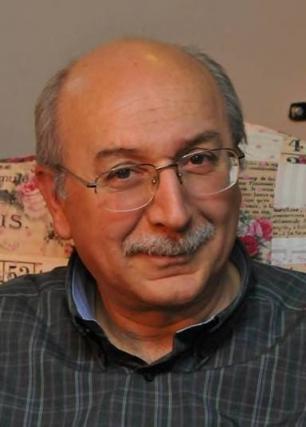He was born in Kayseri in 1955. He took his first serious music lessons while he was a student at Kayseri High School. During the years he attended the State Academy of Fine Arts (1973-1976), he participated in the activities of the Üsküdar Music Society and the University Choir; He took rhythm and repertoire lessons from Kemal Batanay and kemençe lessons from Kâmran Erdoğru. He left the Academy in 1976 and entered the Philosophy Department of the Faculty of Letters. He passed the exam in 1981 and started working as a kemenche player at TRT Istanbul Radio. While continuing his duty at the radio, he wrote musical articles for many encyclopedias and made translations from French between 1980 and 1996. Between 1994 and 1996, he worked on his book titled Encyclopedia of World Instruments. But before completing this book, he concentrated on the Bezmara project. Using miniatures and written sources, he made çeng, old santur, old qanun, miskal and kemânçe for the Bezmârâ group, which he founded to perform the 16th and 17th century Turkish music works notated by Kantemiroğlu, with the forgotten instruments of that period. Again, based on visual and written sources, he prepared drawings and templates for the şehrud, kopuz, old oud and old tanbur and had these instruments made by Sacit Gürel. Bezmârâ, played and directed by Fikret Karakaya, who developed a çeng technique using the qanun technique, has also been working on the 16th and 17th century compositions in Ali Ufkî Bey's manuscript titled Mecmûa-i Sâz ü Söz since 2000. Bezmârâ, who gave many concerts at home and abroad, has released 11 albums, one in France and one in Greece.
Fikret Karakaya, whose book titled Turkish Music Throughout History, which is a listener's guide, is waiting to be published, is working on his book titled Pitch, Intervals, Genres and Modes of Turkish Music.
Karakaya, who invented four new maqams named bezmârâ, suzidil-aşiran, dil-beste and sabâvend, and composed peşrevs, saz-semâîs and game-havas as examples, performed his own compositions accompanied by his friends in the album titled Eski Musikinin Rüzgâryla (2009).
Karakaya taught kemenche at Sakarya University State Conservatory between 2000-2005, and gave organology lessons at Mimar Sinan University State Conservatory between 2005-2009. He joined the teaching staff of Istanbul University State Conservatory in 2013.
He read papers on various aspects of Turkish music in musicology congresses he attended in many major European cities as well as in Islamic countries such as Iran, Syria, Jordan, Tunisia, Lebanon and Azerbaijan, and gained an international reputation.
Karakaya, whose articles and short stories s have been published in some multi-authored books and magazines, wrote two books on the occasion of the 2010 Ali Ufkî Year: 1. Ali Ufkî Bey; 2. Forgotten Ottoman Instruments. Ali Ufkî Bey monography was expanded and republished bilingually (Turkish and English) in 2016: A Polish in Enderun - Ali Ufkî Bey.
Fikret Karakaya, who learned how to make kemenche from Hadi Usta, has made about 150 kemenche since 1974; He repaired the kemençes of masters such as Baron, İzmitli, Zeron and Vasil.


